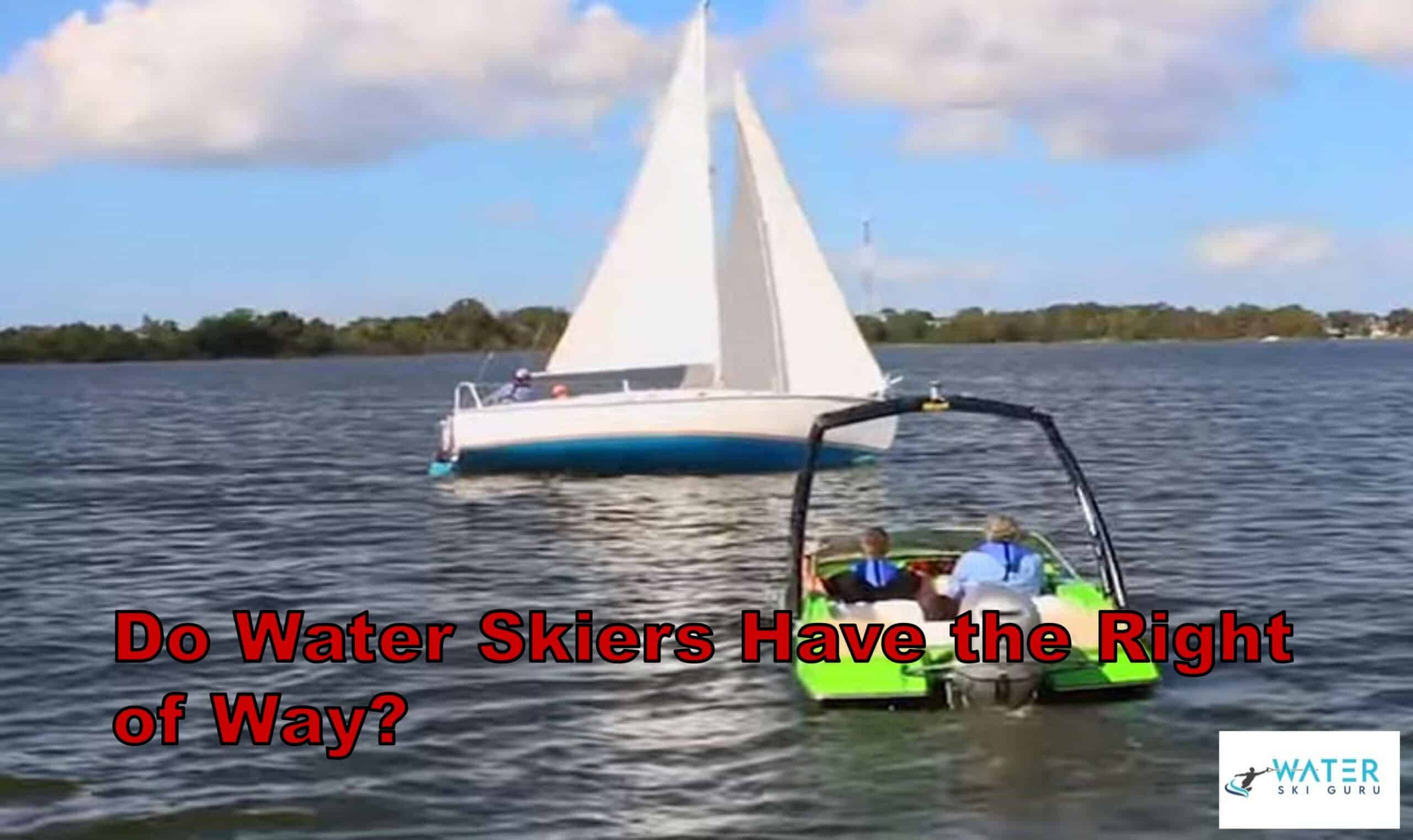When you water ski, you want to make sure that you have the right of way. Water skiers make sure that they can legally ski without having to face any trouble with the law.
If you are a beginner water skier, you are probably wondering whether you have the right of way or not.
Do water skiers have the right of way? Water skiers towed on boats have the right of way in certain situations, such as crossing from the right, because in that situation, the ski boat is the stand-on vessel, and the other boat is the give-way vessel.
In order for you to remain safe and avoid any collision accidents, boats must comply with the rules and regulations. Keep reading to find out more about boats’ right of way.
When Do Water Skiing Boats Have the Right of Way?
Knowing exactly when your water skiing boat has the right of way is crucial, especially if you are a new boat owner. Water skiers might also fear for their own safety.
These rules ensure the water skier’s safety, the boat driver, surrounding boats, and other water skiers present if any.
There are certain situations where water skiing boats have the right of way.
Typically, boaters towing skiers behind them at 30+ mph must follow the Right of Way rules, as all boats do.
If your water skiing boat is crossing from the right, it has the right of way. However, crossing from the right makes your boat a stand-on vessel and makes the other boat the give-way vessel.
Being a stand-on boat gives you the right of way, and you are required to maintain your speed and keep on course while the other boat has to give way.
Ski boats should still prioritize keeping an eye open to avoid collision with other boats or water skiers.
Every boat needs to abide by the right of way rules in the water. It is advised for water skiing boats, in particular, to stay away from traffic for the safety of themselves and others. Finding a spot in the water where not a lot of boats are roaming is ideal.
Boating Right-of-Way Rules Simplified
Right-of-way rules apply to every boat in the water, as we mentioned earlier. These rules are imposed to keep boaters, skiers, and whoever else safe in the water.
There are several rules that apply to different situations that you need to look out for as a boater.
Before learning those rules, it is important to know the difference between a stand-on vessel, or boat, and a give-way vessel.
- A stand-on vessel is a boat that must remain on the same course and maintain its speed if it comes to contact with another boat.
- A give-way vessel, on the other hand, is a boat that has to take action by changing its course, slowing down, or completely stopping for the safety of the other boat.
Now let’s break down the right-of-way rules:
Crossing
It is your duty to maintain course and speed if the other boat is to your starboard (right). This is because it’s a stand-on boat.
Your boat must slow down or change direction to pass behind the give-way boat. The give-way boat is the one that crosses your path to the port (left).
You should let this boat yield, and you are obligated to keep your speed and keep moving in the direction you were going. By doing this, you allow yourself to pass safely while allowing the other boat to change its course, knowing you will not collide.
Meeting
Head-to-head encounters can occur anywhere on the sea; however, you will find that they are prevalent in a channel or narrow pass.
There is one rule that then applies when two boats meet each other head-on.
Each boat, in this case, is a give-way vessel and should stay to its right. Therefore, both boats need to change their course to starboard and let each craft pass to the port (left) side of the other boat.
The way this works will ensure that neither of the boats will collide or damage the other.
Overtaking
Remember that your boat is the give-way vessel when passing another boat; the other boat is the stand-on vessel.
Your first step when a boat is overtaking you is to choose the side of the craft that will allow you to pass safely.
You need to take into account incoming traffic, waterway markers, barriers, or even channel bends. Once you can see the other vessel clearly, accelerate until you can pass it safely while giving it plenty of room.
Which Action Is Legal When Towing a Person on Water Skis?
There are a bunch of rules and laws that come with towing a person behind your boat. Vessels must abide by these rules under all circumstances. It is important to know these laws before buying a water skiing boat.
Here is a list of legal actions you need to follow when towing a skier behind your boat:
- You cannot tow a person behind your boat from sunset to sunrise.
- You need to have at least one more person with you on your boat to act as an observer.
- Your boat must have a wide-angle rearview mirror.
- Your boat that is towing a water skier should not come within 100 feet of an anchored boat, a marked swimming area, a public boat landing, or any personal watercraft.
- You cannot manipulate the towing rope, water skis, or any other type of device that the water skier is using.
- You cannot tow a person behind a personal watercraft unless the manufacturer recommends holding three people. There also needs to be a professional observer on board.
These are some of the most important laws that you need to follow when it comes to towing a water skier behind your boat. Following these simple rules will ensure the safety of your water skiers and yourself. It is also important to talk to a professional before you tow a water skier.
Conclusion
It is important to follow your right-of-way rules when driving a boat. These rules apply to all sorts of boats, no matter the size.
When towing people behind your boat, you need to make sure you look out for any incoming boats to avoid collision or harm to your skier.
The safety of you and others should be your number one priority. Therefore, it is important to do extensive research on the laws that apply to boating to get the safest experience. It also helps to speak to a professional boater.
Related Questions
Do Bigger Boats Have the Right of Way?
Bigger boats do not have the right of way. When it comes to right-of-way rules, the size of your boat does not matter. These laws apply to every type of boat in the water. Different circumstances determine which boats have the right of way and which ones do not.
Can I Tow a Water Skier Behind My Boat at Night?
You should not tow a person behind your boat at night, as it is illegal. Towing people behind your boat at night could risk a lot of danger and collision. It is best to tow water skiers when it is bright enough to see your surroundings.

